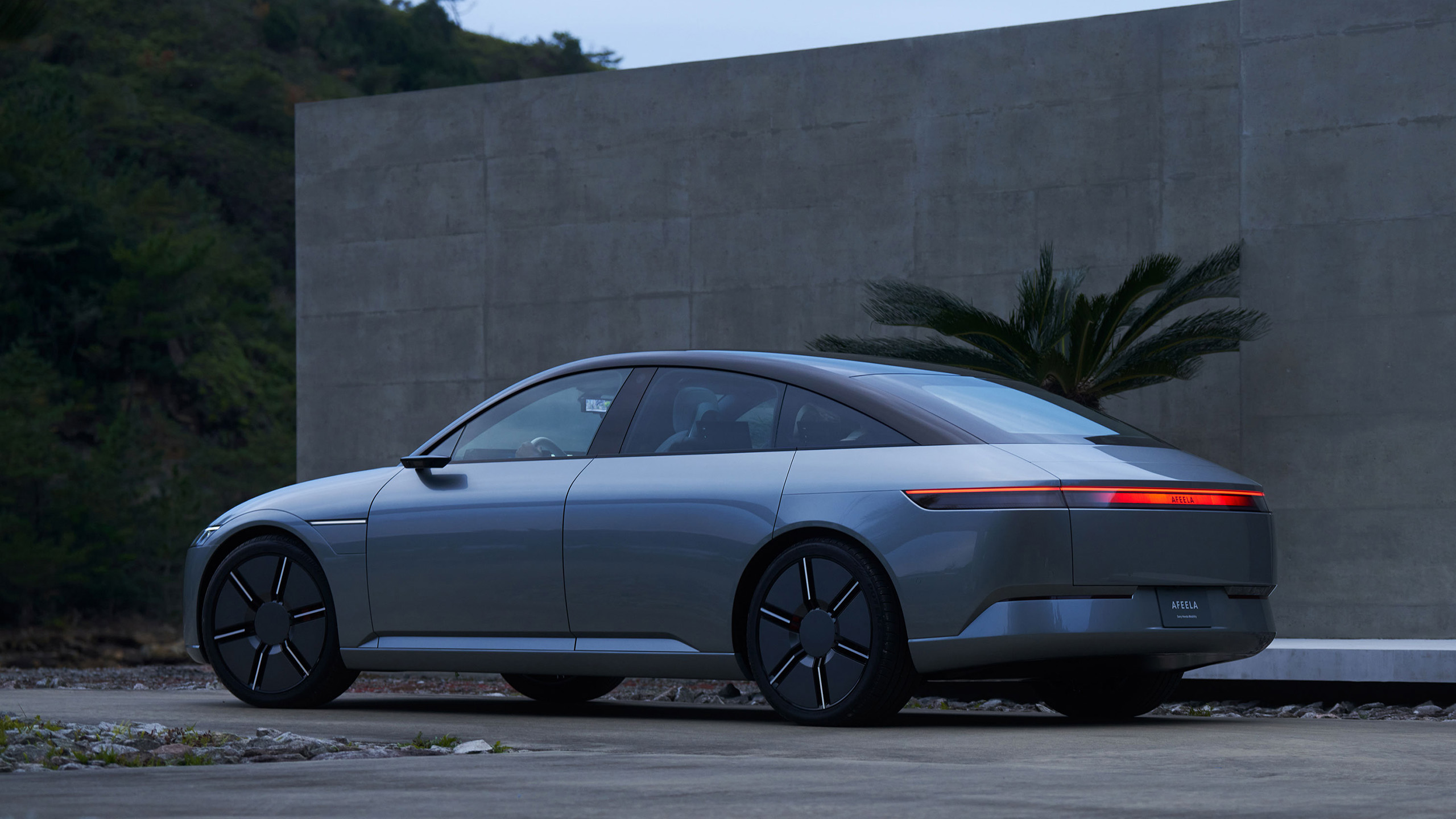Before I started writing and editing stories about cars on a daily basis, I was covering consumer tech, specifically smartphones. The auto industry moves fast, but tech moves faster. Think about it: Giants like Apple and Samsung redesign entire product lines on an annual basis. Two decades ago, the smallest semiconductors were 90 nanometers in size; now, they’re only 3 nm and still shrinking. How many AI-generated images or videos did you come across on your social media feeds, say, five years ago?
The pace of advancement is relentless, and as cars have become increasingly driven by software, that acceleration has overflowed into our sector, too. That’s why vehicles that felt otherworldly at the start of the decade no longer do, and why Sony and Honda’s mission to jointly sell EVs under a new brand, called Afeela, is already unfashionably late.
It turns out Sony Honda Mobility is planning on unveiling an updated version of its Afeela sedan prototype at Las Vegas’ Consumer Electronics Show in January. I’ll be there, and I’m looking forward to seeing it. Our old friend Maddox Kay over at InsideEVs got the scoop while checking out the current concept in New York. What we now know as Afeela first came on the scene in early 2020, with Sony’s Vision-S show car. Built by Magna-Steyr in Austria and subject to a steady regime of testing for its self-driving capabilities, Sony revealed an SUV version two years later, joined forces with Honda shortly after that, and showed off the revised sedan you see above in January 2023.
Unless Sony Honda Mobility announces a new timeline at CES, the target for Afeela’s production launch is, as we understand it, the first half of 2026. Cars take a long time to build, which puts automakers in an especially tough spot because regulations and consumer tastes are constantly shifting. In 2020, an electric sedan like the Vision-S with a screen stretching from pillar to pillar was relatively novel. Failed startups like Byton (anyone remember Byton?) based their entire identities around that tech. But today, you can buy a Cadillac Escalade with a 55-inch display, plus a driver-oriented tablet below the dash for good measure. You can get about half those pixels in a Kia K4. A huge screen just isn’t special anymore.


Not only that, but it arguably wasn’t even that special to begin with. Reading this latest Afeela news, my mind immediately wandered back to that recent Hyundai Design North America presentation, where execs at the company found that drivers in North America, at least, were “stressed, annoyed, and steamed” by touchscreen-dependent controls during focus group testing. HDNA Vice President Ha Hak-soo, in the words of Korea JoongAng Daily, “admitted that the company, like much of the auto industry, had initially been taken in by the ‘wow’ factor of the massive multimedia systems that Tesla pioneered—but that it was not, ultimately, what Hyundai wanted to go for.”
One of Afeela’s calling cards is a wide-ass screen. Another is its Level 3 self-driving technology. Mercedes-Benz became the first automaker to gain approval to sell Level 3-equipped cars in select states late last year; some global markets have allowed them for a bit longer. The patchwork legislation around testing and deploying cars with increasing degrees of autonomy could very well change under the incoming Trump administration, as that’s something Tesla CEO and likely government consultant Elon Musk has stated that he wants to address. Whether that happens or not, autonomy isn’t exactly a feature consumers appear to be champing at the bit for, especially amid a rejection of in-car software and subscriptions, touchscreens, and—to some extent—fully electric powertrains by the American car-owning public.


Look, I don’t want Afeela to fail. I’m not entirely sure that it will. As a geek, I’ve always appreciated Sony’s philosophy toward design, and I’d love to be wrong about this. But a sedan at a time when sedans aren’t selling; an EV at a time when demand for EVs has plateaued; and a vehicle defined by massive displays when people have unequivocally expressed that they miss stupid, simple buttons doesn’t feel like a winning formula. In 2019, a product like it might’ve looked like where the market was headed. As 2024 draws to a close, I’m less confident than ever that’s the case—and about a year and a half from now, the first Afeela-badged vehicles could be on American roads.
How do you sell a vision of the future from five years ago? Seems like we’re about to find out.
Got tips? Send ’em to [email protected]
Read the full article here

